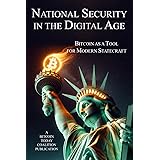Does the thought of earning digital gold by simply plugging in a machine still spark your imagination? Many aspiring enthusiasts wonder if Bitcoin mining remains a viable venture for newcomers in 2025. As the informative video above details, the landscape of Bitcoin mining continues to evolve rapidly, presenting both challenges and exciting opportunities for those ready to delve into the world of cryptocurrency. This comprehensive guide expands upon the video’s insights, offering a deeper dive into how you can navigate the complexities of mining Bitcoin and potentially secure a share of the network’s rewards.
Understanding Bitcoin Mining Post-Halving
Bitcoin’s fourth halving, which occurred in April 2024, significantly altered the rewards structure for miners. Block rewards, once 6.25 BTC, now stand at 3.125 BTC per block, emphasizing efficiency and scale. This reduction intensifies competition, forcing miners to optimize their operations like never before. However, the halving also underscores Bitcoin’s scarcity, potentially driving its value higher and maintaining the incentive for mining. The network difficulty has also reached record levels, making the process more challenging for individual miners.
Simultaneously, the crypto space has experienced a surge in institutional interest. Spot Bitcoin ETFs and strategic reserve frameworks in the US have ushered in a new era of mainstream adoption. This growing credibility attracts more participants and capital into the ecosystem, indirectly affecting mining profitability. More users mean more transactions, which translates to potentially higher transaction fees that supplement the block reward for miners.
Tether’s Game-Changing Mining Operating System (MOS)
A significant development to watch for is Tether’s plan to open-source its Mining Operating System (MOS) by the end of 2025. This initiative aims to democratize Bitcoin mining, making it accessible to a broader range of participants. MOS is designed to be scalable, modular, and peer-to-peer, meaning it can run on diverse hardware. From low-cost devices like a Raspberry Pi to massive industrial mining rigs, this flexibility could level the playing field. This innovation challenges the traditional dominance of large corporate miners and fosters greater network decentralization, potentially inviting fresh talent into the industry.
The Mechanics of Mining BTC: A Digital Treasure Hunt
At its core, Bitcoin mining is a sophisticated digital treasure hunt. Every ten minutes, thousands of powerful computers worldwide compete to solve a complex cryptographic puzzle. Miners gather new Bitcoin transactions into a “block” and then repeatedly modify a special number, called a “nonce,” trying to produce a hash that meets specific criteria (starting with a certain number of zeros). This process, known as Proof of Work, is computationally intensive and ensures the security and integrity of the Bitcoin blockchain.
When a miner successfully finds the correct hash, their victory is broadcast across the network. The new block is then added to Bitcoin’s immutable public ledger, and the winning miner claims the block reward of 3.125 BTC, along with any accumulated transaction fees. This continuous, competitive validation process is what keeps Bitcoin decentralized, secure, and resilient against fraud. It consumes considerable energy, but this energy expenditure is fundamental to the network’s security model.
Navigating Bitcoin Mining Methods in 2025
Choosing the right mining approach is crucial for profitability, especially for beginners. The three primary methods each offer distinct advantages and drawbacks.
Solo Mining: High Risk, High Reward
Solo mining means you undertake the entire process by yourself, keeping the full 3.125 BTC block reward if successful. However, with today’s extremely high network difficulty, the probability of an individual miner, even with significant hash power, finding a block is incredibly small. This method is generally suitable only for operations with immense capital, multiple cutting-edge ASICs, and access to extremely cheap electricity. For most beginners, solo mining presents an almost insurmountable challenge.
Pool Mining: Collaborative and Consistent
Pool mining remains the most popular and practical option for the vast majority of miners, especially newcomers. Over 80% of miners now join forces, combining their computational power to increase their collective chances of solving a block. When the pool successfully mines a block, the 3.125 BTC reward and transaction fees are distributed proportionally among participants based on their contributed hash power. This approach provides more consistent, albeit smaller, payouts, making it ideal for maintaining a steady income stream. Reputable pools like Foundry USA, F2Pool, and Antpool control over 30% of the global hash rate, offering reliable opportunities.
Cloud Mining: Renting Hash Power
Cloud mining allows you to rent hash power from large data centers, eliminating the need to purchase and maintain your own equipment. While convenient, this method often comes with higher fees and less control over your operation. It requires careful due diligence to avoid scams and ensure the contract terms are favorable. The profitability of cloud mining heavily depends on Bitcoin’s price movements and the electricity costs factored into your contract.
Essential Hardware and Software for Mining Bitcoin
Gone are the days when a regular computer or a powerful graphics card could profitably mine Bitcoin. In 2025, specialized Application-Specific Integrated Circuits (ASICs) are the only machines capable of competing effectively. These machines are engineered for one purpose: rapidly solving the SHA-256 cryptographic puzzles required for Bitcoin mining.
Top ASIC Miners for 2025
- Antminer S21 Pro: This high-performance miner delivers over 200 terahashes per second (TH/s) with exceptional energy efficiency. It is typically favored for large-scale industrial operations due to its power and cost.
- Whatsminer M66S: Known for its robust stability, compact design, and advanced cooling systems, the M66S is a strong contender. It appeals to both dedicated solo miners and those contributing to mining pools.
- Bitmain Antminer T21: Offering a more cost-effective entry point with a slightly lower hash rate, the T21 is a suitable option for smaller setups or home-based miners who are mindful of initial investment.
When selecting an ASIC, prioritize efficiency, measured in joules per terahash (J/TH). A lower J/TH indicates that the miner consumes less electricity for a given amount of processing power, directly impacting your profitability. These machines are often expensive investments, so careful consideration of your budget and potential return on investment is paramount.
Mining Software: Connecting Your Rig
Once your ASIC is humming, you need mining software to connect it to the Bitcoin network or your chosen mining pool. Popular software options include CGMiner, BFGMiner, EasyMiner, and CudoMiner. These programs allow you to monitor your miner’s performance, manage settings, and direct its hash power effectively. They bridge the gap between your physical hardware and the digital blockchain, ensuring smooth operation and reward accrual.
Securing Your Bitcoin Rewards: Wallet Options
Once you start earning Bitcoin, securing your hard-earned digital assets becomes a top priority. Various wallet types offer different levels of security and convenience.
Hardware Wallets: Maximum Security
Hardware wallets like Ledger and Trezor store your private keys offline, completely isolating them from internet-connected devices. This “cold storage” method provides the highest level of protection against hacking and malware. While requiring a physical device and a slightly more involved setup, they are essential for anyone serious about long-term Bitcoin holdings. Always purchase hardware wallets directly from the manufacturer to avoid tampered devices.
Custodial Wallets: Convenience with Compromise
Custodial wallets, typically offered by cryptocurrency exchanges, are easy to use and highly convenient for active traders. However, with a custodial wallet, the exchange holds your private keys, meaning you don’t have complete control over your funds. While reputable exchanges like BingX implement robust security measures, this method introduces counterparty risk. Understand the trade-off between convenience and absolute control.
Full-Node Wallets: Control and Privacy
Full-node wallets, such as Bitcoin Core or Umbrel, download and verify the entire Bitcoin blockchain. This provides maximum privacy, control, and contributes directly to the network’s decentralization. Running a full node requires significant storage space and technical know-how, making it more suitable for advanced users. It reinforces the ethos of self-sovereignty within the Bitcoin ecosystem.
Is Bitcoin Mining Still Profitable in 2025?
After the 2024 halving, profit margins for Bitcoin miners have indeed become razor-thin. Success hinges on a combination of factors, with electricity cost being the most critical. Miners consistently paying less than $0.05 per kilowatt-hour (kWh) are typically the ones sustaining profitability. Achieving this often involves operating in regions with abundant and inexpensive renewable energy sources, such as hydropower or solar.
Efficient ASICs are non-negotiable; older, less efficient models struggle to compete. Beyond hardware and electricity, proper maintenance, a stable internet connection, and strategic pool choices significantly impact your bottom line. Many miners are actively pursuing renewable energy solutions not just for cost reduction but also to mitigate regulatory scrutiny over energy consumption. The ability to adapt to changing network conditions and energy markets will determine long-term viability in this dynamic industry.
Common Pitfalls and How to Avoid Them
New Bitcoin miners must be aware of potential obstacles to ensure a sustainable and profitable operation. Navigating these challenges effectively is key to success in this competitive environment.
- Exorbitant Fees: Mining pools typically charge 1-3% of your earnings, while cloud mining contracts often have higher, less transparent fees. Always read the terms carefully and calculate how fees impact your net profit before committing.
- Regulatory Uncertainty: The regulatory landscape for cryptocurrency mining varies widely across jurisdictions. Some countries have imposed outright bans or strict energy consumption rules, leading to significant disruptions. Stay informed about local and international regulations to avoid compliance issues.
- Taxation: Mining income is generally considered taxable in many regions. You must keep meticulous records of your earnings, expenses, and any capital gains from selling mined Bitcoin. Consult with a tax professional to understand your specific obligations.
- Equipment Failure: ASICs generate substantial heat and require consistent cooling and a dust-free environment. Overheating or accumulated dust can lead to costly equipment failure and downtime. Regular cleaning and a well-ventilated setup are essential for hardware longevity.
Your Beginner’s Checklist for Mining Bitcoin in 2025
Ready to embark on your Bitcoin mining journey? Here’s a practical checklist to guide your first steps and maximize your potential for success.
- Acquire an Efficient ASIC Miner: Invest in a modern, energy-efficient ASIC designed for profitability in current conditions. Research models like the Antminer S21 Pro or Whatsminer M66S.
- Secure a Suitable Location: Choose a spot that is cool, well-ventilated, and, most importantly, offers access to low-cost electricity. Noise and heat management are critical considerations.
- Install Mining Software: Download and configure reliable mining software such as CGMiner or EasyMiner to connect your hardware to the network. Ensure compatibility with your ASIC and operating system.
- Join a Reputable Mining Pool: For beginners, joining a well-established pool like Foundry USA or F2Pool is highly recommended. This strategy provides more consistent payouts and a better chance of earning rewards.
- Set Up a Secure Wallet: Prioritize security by using a hardware wallet for long-term storage of your mined BTC. Understand the differences between custodial and non-custodial options.
- Monitor Your Operation: Continuously track your electricity costs, Bitcoin’s price, and the network’s mining difficulty. This vigilance allows you to make informed decisions and optimize your profitability.
Bitcoin mining in 2025 demands dedication and strategic planning, but it still offers a unique opportunity to participate in the network’s security and earn digital assets. Embrace the challenge, learn continuously, and you too can contribute to the future of money while building your Bitcoin holdings.







